Artaxata
Q706215Artaxata or Artaxiasata (Greek Ἀρτάξατα or ᾽Αρταξιάσατα): Hellenistic capital of Armenia (modern Khor Virap).
Foundation
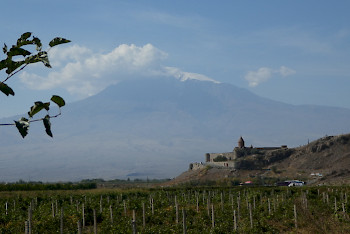
Artaxata was founded in 188 BCE by Artaxias, the first king of Armenia from the Artaxiad dynasty, who was acting on advise of his military adviser Hannibal Barca.note Reportedly, Hannibal even designed the citynote and the city was therefore nicknamed "the Armenian Carthage".note The Graeco-Roman geographer Strabo may have remembered the real name of the city when he notes that it was also called Artaxiasata, a close rendering of the words šiyati, "the joy of", and arta, "justice".note
"A beautiful settlement"
The new city, which replaced Yervandashat as capital of Armenia, was situated on the north bank of the river Araxes, on a fertile plain, close to the confluence with the river that is now called Metsamor. The site has a great view on the mountain Baris (now known as Ararat). The philosopher Plutarch calls it "a very great and beautiful city"note and Strabo confirms that Artaxata was
a beautiful settlement and the royal residence of the country. It is situated on a peninsula-like elbow of land and its walls have the river as protection all round them, except at the isthmus, which is enclosed by a trench and a palisade.note
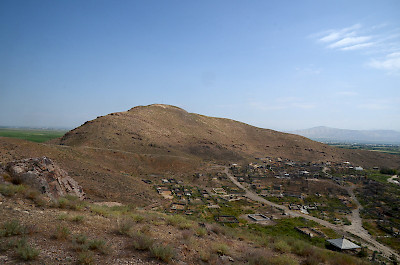
This meander in the river has not been identified. The walls, however, have been found and appear to have been three meters thick and ten kilometers long; five kilometers have been investigated and show that the upper part of the city was built on several hills with steep slopes. The northernmost hill, which rises about seventy meters above the plain, was the acropolis: a large, triangular fortress. The brick buttresses of the fortress' wall are older than the early second century BCE and prove that king Artaxias, when he founded Artaxata, reused an older, Urartian, hill fort. The turrets, used for catapults, were Hellenistic additions. The excavators found an armory and the workshop of a blacksmith, swords, daggers, and no less than three thousand arrow- and spearheads.
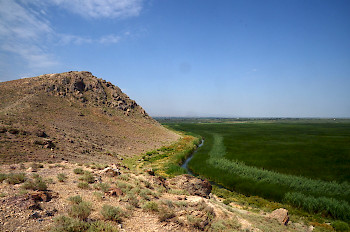
Archaeologists have identified aqueducts and drainage channels. There were bathhouses on the acropolis and, close to the Araxes River, in the lower city. We also know that there was a theater, the first in Armenia. Writing in Late Antiquity, when Artaxata was no longer the splendid city it had once been, the Armenian writer Moses of Chorene records that there had been numerous pagan temples, dedicated to Tir and Anahita (Apollo and Artemis).
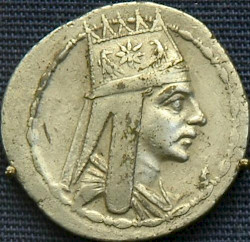
According to the Peutinger Map, roads connected Artaxata to Mesopotamia in the southwest, to Media in the southeast, and to the Greek cities of the Black Sea in the northwest. The roads facilitated trade - coins and seals are archaeological evidence - and the city became wealthy. It attracted new inhabitants, although not all of them came voluntarily: king Tigranes II (r. c.95 - c.55 BCE) transferred the prisoners of war from twelve towns to Artaxata. The city must have had tens of thousands of inhabitants.
War
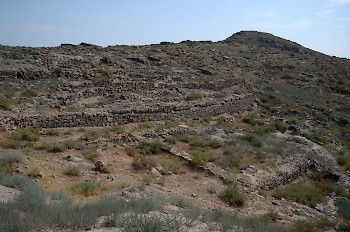
Its wealth made Artaxata a natural military target. In 68 BCE, the Roman commander Lucullus besieged the city, where Tigranes II (an ally of Rome's enemy Mithridates VI Eupator of Pontus) had taken his refuge, but Lucullus' rivals in Rome managed to secure his recall before he could achieve something.note It was left to Lucullus' successor Pompey to accept the surrender of Tigranes.note
Later, in 34 BCE, the city was the target of a successful Roman campaign by Mark Antony, who replaced king Artavasdes II.note In 1 CE, the Roman prince Gaius Caesar, a grandson of the emperor Augustus, visited the area and captured a nearby city called Artageras,note while in the year 18 CE, the Roman prince Germanicus visited Artaxata to intervene in the Armenian succession.note
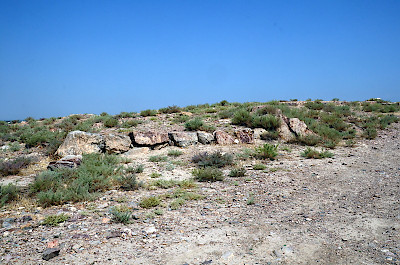
In 58, the Roman commander Gnaeus Domitius Corbulo launched a very successful campaign against Armenia, using III Gallica, VI Ferrata, and X Fretensis. He razed Artaxata to the ground and gave the Armenians a new, pro-Roman king, Tigranes VI.note When a peace treaty was concluded, the Romans accepted a different king, Tiridates, who was crowned by the emperor Nero (66 CE). A brother of the Parthian king Vologases I, he was the first king from the Arsacid dynasty in Armenia.
Although Armenia got a new dynasty, Artaxata remained its capital. although it was briefly renamed Neronia.note Things started to change in 114 CE, when the Roman emperor Trajan invaded and conquered Armenia. (A large inscription by the Fourth Legion Scythica can be seen in the State Museum of Armenian History in Yerevan.note
Late Antiquity
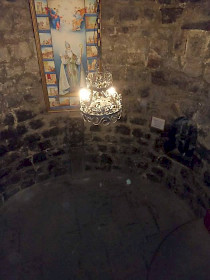
The city remained inhabited and remained, in spite of being looted by the Sasanian king Shapur II in 369, a cultural center of some importance. It was the place where king Tiridates III had the Christian nun Hripsime torturednote and where he kept the Christian preacher Gregory the Illuminator captive,note until Tiridates converted to the new faith in the first years of the fourth century. Gregory's prison cell became the nucleus of a sanctuary, Khor Virap, which still exists amidst the abandoned ruins of Artaxata.
In the fifth century, the river Metsamor changed its course and the city declined. Still, it remained a trading place between the Roman and Sassanian Empires: the Codex Justinianus refers to a law of Honorius and Theodosius II, dated to 408 or 409, that trade was only allowed in Nisibis, Callinicus (Raqqa in Syria), and Artaxata.note In 449, Artaxata was used for a meeting of Armenian Christian leaders to the discuss the demands of the Sassanid king Yazdgard II, who insisted that the Armenians would follow Sassanian religious leadership. (Two years later, the Sassanian Persians defeated the Armenians.)
By now, Artaxata had been eclipsed by Vagharshapat and Dvin; Khor Virap survived as a center of pilgrimage.
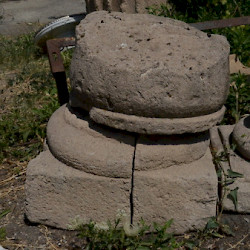 Artaxata, Column base |
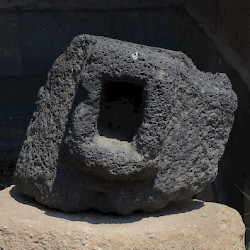 Artaxata, Mill |
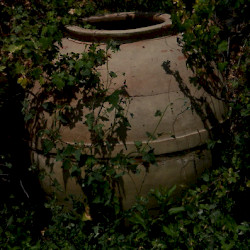 Artaxata, Storage jar |
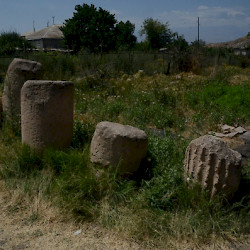 Artaxata, Column fragments |
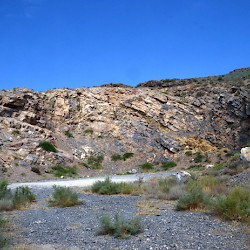 Artaxata, Quarry |
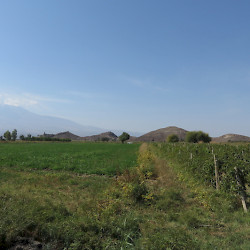 The hills of Artaxata |
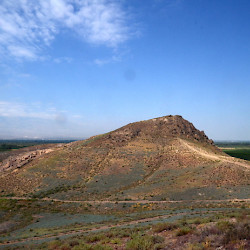 One of the hills of Artaxata |
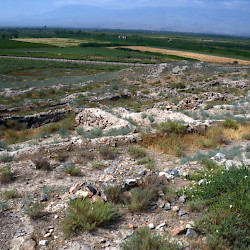 Artaxata, Store rooms |